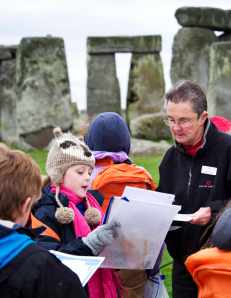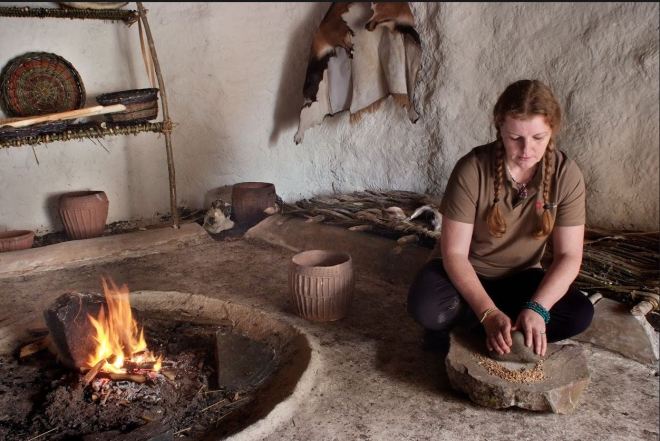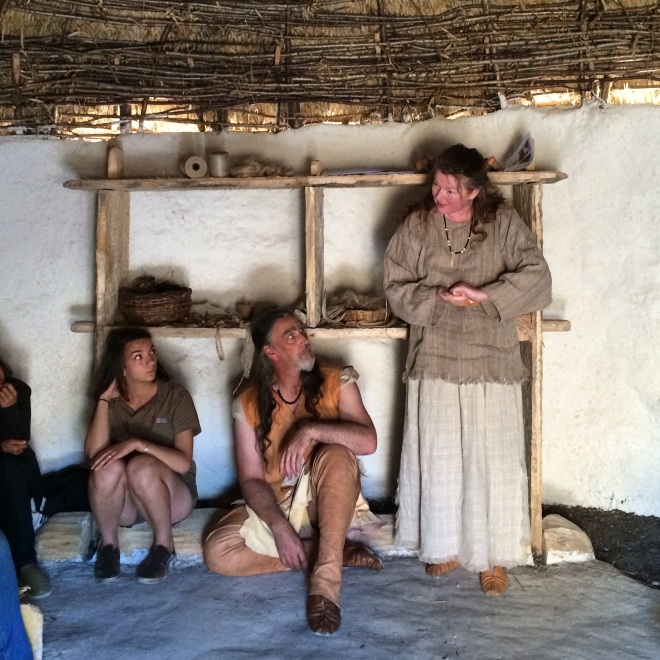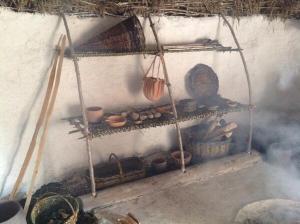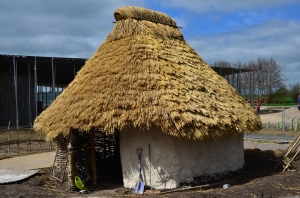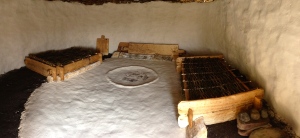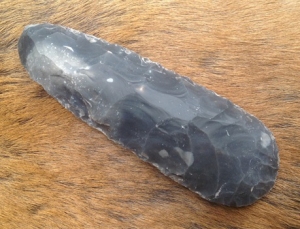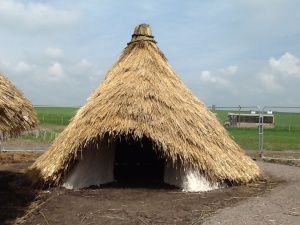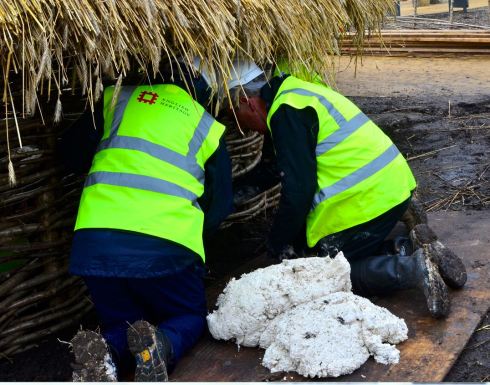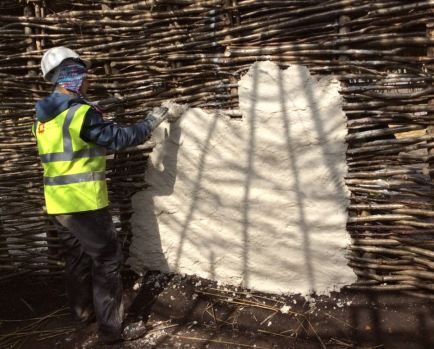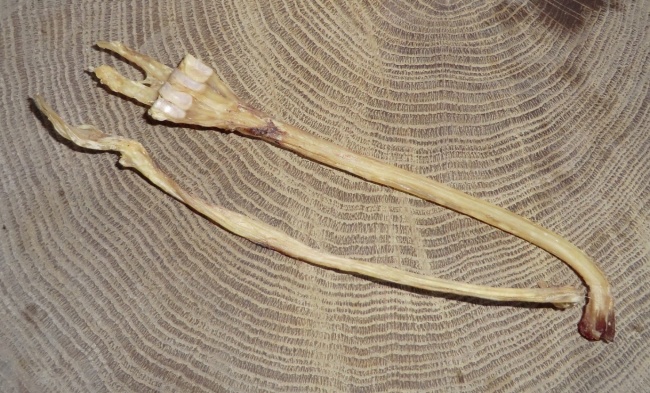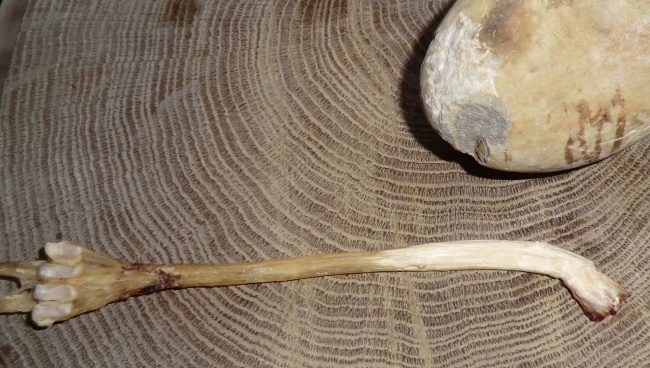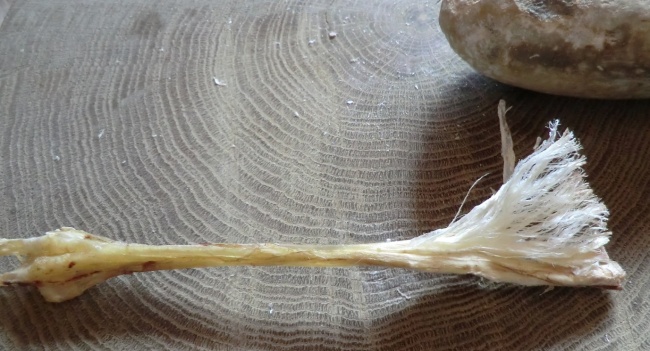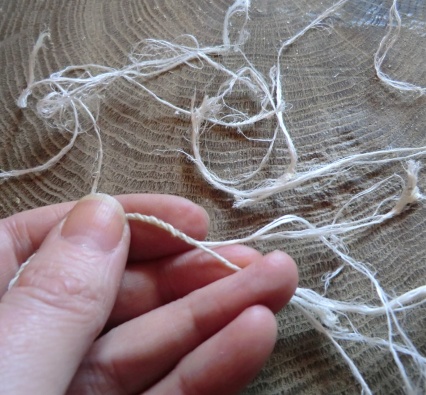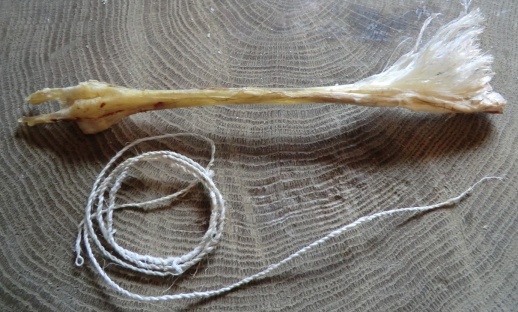In this blog post, Nick Jones one of the volunteers involved in the Neolithic House build project tells us how being involved has stimulated his thinking about how Neolithic people may have lived from day to day, and how he thinks they may have managed their environment.
What do you think the lives of these original builders may have been like?
I think that they would have worked up healthy appetites dragging stones and digging henges, but they were apparently not subsistence farmers. The archaeological evidence suggests that they feasted well and travelled great distances. They built houses, but they were not simple builders.
They may have lived in fear of wild animals, but we know they were not naked, homeless, or hungry savages. They were modern humans who carried out one of the most extraordinary feats of engineering in the world.

What level of effort and organisation do you think was required?
Our experiments suggest that each house takes about 1,000 hours to build, using about 1,000 rods of Hazel, an acre or two of wheat straw, and nearly two tons of chalk daub. Gathering and preparing these materials required planning. Supplies of daub are not a problem, but supplies of thatching straw are governed by annual harvests, and supplies of wattle are governed by seven-year cycles of woodland management.
As the proverb says, “If you are thinking one year ahead, plant a seed. If you are thinking ten years ahead, plant a tree. If you are thinking one hundred years ahead, educate the people.”

And from a social or cultural point of view?
I believe there must have been a highly educated elite that conceived Stonehenge, but house-building was more likely a ‘cultural institution’ – something everyone knew how to do, and everyone, young or old, took part in – an early form of ‘building society’. Such a common task would also have embodied social ‘bonding power’, although not on the scale of henge-building.
Some aspects of the house-building process may have been more important than others (eg thatching the roof) and some would have required more strength than others (eg driving stakes into the ground). It seems likely that these special craft skills may have been recognised and rewarded, and that this may have also applied to the processes of acquiring materials.
Specialists in woodland management would have been needed, perhaps living on the job, in the woods, protecting the coppice from deer etc and extending the area of productive woodland. Perhaps they prepared bundles of rods for nearby settlements, and traded them for food or clothing?

So how much do you know about these Neolithic people and Stonehenge now?
In trying to make sense of all this, two things sprang to my mind. The first was an English Heritage jigsaw of Stonehenge we bought for Audrey Grundy, who was recovering from an operation. Having completed the 1,000 piece puzzle, she told me, “Putting the pieces of the stones together was much easier than the background.”
A useful metaphor, I thought, but then I realised that the prospect of ever completing the whole Stonehenge ‘jigsaw’ is just an illusion. I remembered Einstein: “The more I learn, the more I realise how much I don’t know.” Thanks to the Neolithic houses project, I now realise how much I don’t know about far more than I did before, if you see what I mean!
Which part of the project has taught you the most?
Learning springs from many directions: the practical house-building activities and skills, the insights these offer and the questions they raise; the knowledge, experiences, expertise and stories of other team members; and the countless questions asked over the fence by visitors.
English Heritage staff have also stimulated my thinking, notably Senior Properties Historian, Susan Greaney, and archaeo-astronomer, Simon Banton. I am now wrestling with Ancestral Geographies of the Neolithic, Landscapes, monuments and memory (1) and Chalkland, an archaeology of Stonehenge and its region (2). Thanks, guys!

What has been the best learning element of the experience for you?
Perhaps the most poignant and pleasurable learning experience was coppicing, which lies at the very heart of Neolithic house-building. Kneeling by a Hazel stool, cutting out rods, the sound of nearby conversation, bundles being dragged through the woodland, a whiff of wood-smoke from the fire, and Coco the Spaniel demanding another thrown stick – it all seemed timeless. It was as if I had stepped back 5,000 years.

Refs:
1 Ancestral Geographies of the Neolithic, Landscapes, monuments and memory, by Mark Edmonds, Routledge, 1999.
2 Chalkland, an archaeology of Stonehenge and its region, by Andrew J Lawson, Hobnob Press, 2007
Thanks so much Nick. If you are planning to visit Stonehenge in these the last few weeks of the Neolithic house build you may be lucky enough to catch Nick or one of the other volunteers who will be very happy to tell you more about the techniques they’ve been using to build the houses and what else they’ve learnt along the way.
Additional Volunteering Opportunities
If you are interested in becoming a Stonehenge Neolithic House Interpretation Volunteer, you can find out more on the English Heritage website. In this role, you will be responsible for maintaining the houses, lighting fires and bringing the stories of the Neolithic people who originally lived in them to life for all our visitors.

